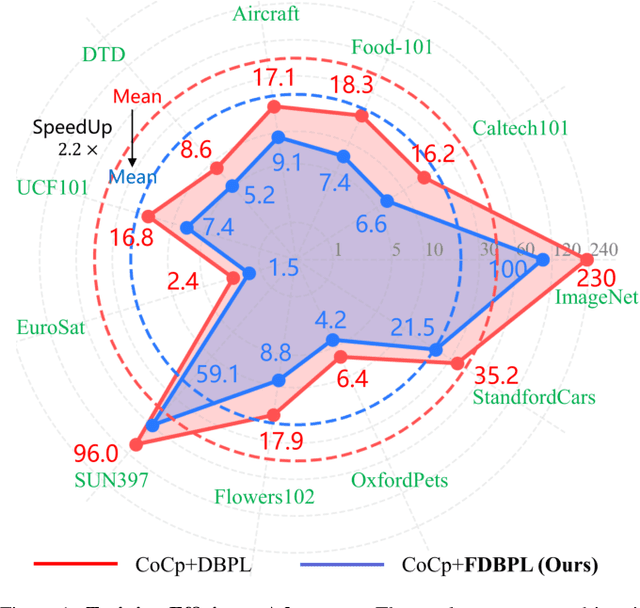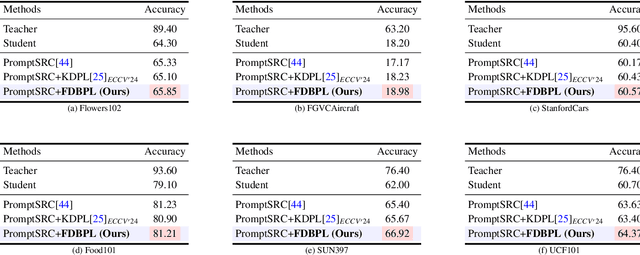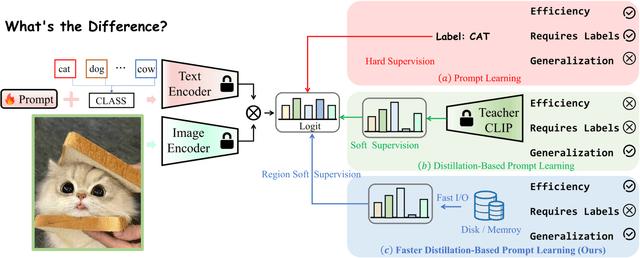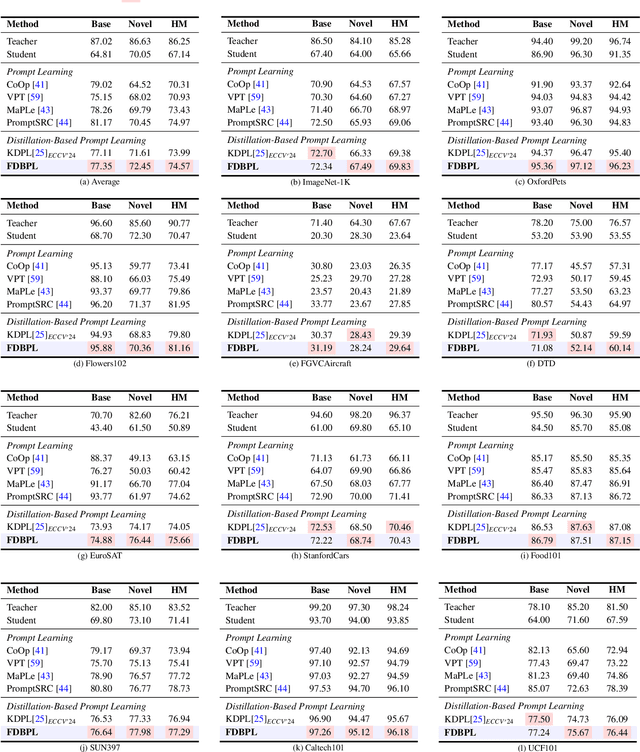Wenhao Xu
CurriFlow: Curriculum-Guided Depth Fusion with Optical Flow-Based Temporal Alignment for 3D Semantic Scene Completion
Oct 14, 2025Abstract:Semantic Scene Completion (SSC) aims to infer complete 3D geometry and semantics from monocular images, serving as a crucial capability for camera-based perception in autonomous driving. However, existing SSC methods relying on temporal stacking or depth projection often lack explicit motion reasoning and struggle with occlusions and noisy depth supervision. We propose CurriFlow, a novel semantic occupancy prediction framework that integrates optical flow-based temporal alignment with curriculum-guided depth fusion. CurriFlow employs a multi-level fusion strategy to align segmentation, visual, and depth features across frames using pre-trained optical flow, thereby improving temporal consistency and dynamic object understanding. To enhance geometric robustness, a curriculum learning mechanism progressively transitions from sparse yet accurate LiDAR depth to dense but noisy stereo depth during training, ensuring stable optimization and seamless adaptation to real-world deployment. Furthermore, semantic priors from the Segment Anything Model (SAM) provide category-agnostic supervision, strengthening voxel-level semantic learning and spatial consistency. Experiments on the SemanticKITTI benchmark demonstrate that CurriFlow achieves state-of-the-art performance with a mean IoU of 16.9, validating the effectiveness of our motion-guided and curriculum-aware design for camera-based 3D semantic scene completion.
STARS: A Unified Framework for Singing Transcription, Alignment, and Refined Style Annotation
Jul 09, 2025Abstract:Recent breakthroughs in singing voice synthesis (SVS) have heightened the demand for high-quality annotated datasets, yet manual annotation remains prohibitively labor-intensive and resource-intensive. Existing automatic singing annotation (ASA) methods, however, primarily tackle isolated aspects of the annotation pipeline. To address this fundamental challenge, we present STARS, which is, to our knowledge, the first unified framework that simultaneously addresses singing transcription, alignment, and refined style annotation. Our framework delivers comprehensive multi-level annotations encompassing: (1) precise phoneme-audio alignment, (2) robust note transcription and temporal localization, (3) expressive vocal technique identification, and (4) global stylistic characterization including emotion and pace. The proposed architecture employs hierarchical acoustic feature processing across frame, word, phoneme, note, and sentence levels. The novel non-autoregressive local acoustic encoders enable structured hierarchical representation learning. Experimental validation confirms the framework's superior performance across multiple evaluation dimensions compared to existing annotation approaches. Furthermore, applications in SVS training demonstrate that models utilizing STARS-annotated data achieve significantly enhanced perceptual naturalness and precise style control. This work not only overcomes critical scalability challenges in the creation of singing datasets but also pioneers new methodologies for controllable singing voice synthesis. Audio samples are available at https://gwx314.github.io/stars-demo/.
SAMamba: Adaptive State Space Modeling with Hierarchical Vision for Infrared Small Target Detection
May 29, 2025Abstract:Infrared small target detection (ISTD) is vital for long-range surveillance in military, maritime, and early warning applications. ISTD is challenged by targets occupying less than 0.15% of the image and low distinguishability from complex backgrounds. Existing deep learning methods often suffer from information loss during downsampling and inefficient global context modeling. This paper presents SAMamba, a novel framework integrating SAM2's hierarchical feature learning with Mamba's selective sequence modeling. Key innovations include: (1) A Feature Selection Adapter (FS-Adapter) for efficient natural-to-infrared domain adaptation via dual-stage selection (token-level with a learnable task embedding and channel-wise adaptive transformations); (2) A Cross-Channel State-Space Interaction (CSI) module for efficient global context modeling with linear complexity using selective state space modeling; and (3) A Detail-Preserving Contextual Fusion (DPCF) module that adaptively combines multi-scale features with a gating mechanism to balance high-resolution and low-resolution feature contributions. SAMamba addresses core ISTD challenges by bridging the domain gap, maintaining fine-grained details, and efficiently modeling long-range dependencies. Experiments on NUAA-SIRST, IRSTD-1k, and NUDT-SIRST datasets show SAMamba significantly outperforms state-of-the-art methods, especially in challenging scenarios with heterogeneous backgrounds and varying target scales. Code: https://github.com/zhengshuchen/SAMamba.
FDBPL: Faster Distillation-Based Prompt Learning for Region-Aware Vision-Language Models Adaptation
May 23, 2025



Abstract:Prompt learning as a parameter-efficient method that has been widely adopted to adapt Vision-Language Models (VLMs) to downstream tasks. While hard-prompt design requires domain expertise and iterative optimization, soft-prompt methods rely heavily on task-specific hard labels, limiting their generalization to unseen categories. Recent popular distillation-based prompt learning methods improve generalization by exploiting larger teacher VLMs and unsupervised knowledge transfer, yet their repetitive teacher model online inference sacrifices the inherent training efficiency advantage of prompt learning. In this paper, we propose {{\large {\textbf{F}}}}aster {{\large {\textbf{D}}}}istillation-{{\large {\textbf{B}}}}ased {{\large {\textbf{P}}}}rompt {{\large {\textbf{L}}}}earning (\textbf{FDBPL}), which addresses these issues by sharing soft supervision contexts across multiple training stages and implementing accelerated I/O. Furthermore, FDBPL introduces a region-aware prompt learning paradigm with dual positive-negative prompt spaces to fully exploit randomly cropped regions that containing multi-level information. We propose a positive-negative space mutual learning mechanism based on similarity-difference learning, enabling student CLIP models to recognize correct semantics while learning to reject weakly related concepts, thereby improving zero-shot performance. Unlike existing distillation-based prompt learning methods that sacrifice parameter efficiency for generalization, FDBPL maintains dual advantages of parameter efficiency and strong downstream generalization. Comprehensive evaluations across 11 datasets demonstrate superior performance in base-to-new generalization, cross-dataset transfer, and robustness tests, achieving $2.2\times$ faster training speed.
Image Recognition with Online Lightweight Vision Transformer: A Survey
May 06, 2025Abstract:The Transformer architecture has achieved significant success in natural language processing, motivating its adaptation to computer vision tasks. Unlike convolutional neural networks, vision transformers inherently capture long-range dependencies and enable parallel processing, yet lack inductive biases and efficiency benefits, facing significant computational and memory challenges that limit its real-world applicability. This paper surveys various online strategies for generating lightweight vision transformers for image recognition, focusing on three key areas: Efficient Component Design, Dynamic Network, and Knowledge Distillation. We evaluate the relevant exploration for each topic on the ImageNet-1K benchmark, analyzing trade-offs among precision, parameters, throughput, and more to highlight their respective advantages, disadvantages, and flexibility. Finally, we propose future research directions and potential challenges in the lightweighting of vision transformers with the aim of inspiring further exploration and providing practical guidance for the community. Project Page: https://github.com/ajxklo/Lightweight-VIT
CAE-DFKD: Bridging the Transferability Gap in Data-Free Knowledge Distillation
Apr 30, 2025Abstract:Data-Free Knowledge Distillation (DFKD) enables the knowledge transfer from the given pre-trained teacher network to the target student model without access to the real training data. Existing DFKD methods focus primarily on improving image recognition performance on associated datasets, often neglecting the crucial aspect of the transferability of learned representations. In this paper, we propose Category-Aware Embedding Data-Free Knowledge Distillation (CAE-DFKD), which addresses at the embedding level the limitations of previous rely on image-level methods to improve model generalization but fail when directly applied to DFKD. The superiority and flexibility of CAE-DFKD are extensively evaluated, including: \textit{\textbf{i.)}} Significant efficiency advantages resulting from altering the generator training paradigm; \textit{\textbf{ii.)}} Competitive performance with existing DFKD state-of-the-art methods on image recognition tasks; \textit{\textbf{iii.)}} Remarkable transferability of data-free learned representations demonstrated in downstream tasks.
Generalised Label-free Artefact Cleaning for Real-time Medical Pulsatile Time Series
Apr 29, 2025Abstract:Artefacts compromise clinical decision-making in the use of medical time series. Pulsatile waveforms offer probabilities for accurate artefact detection, yet most approaches rely on supervised manners and overlook patient-level distribution shifts. To address these issues, we introduce a generalised label-free framework, GenClean, for real-time artefact cleaning and leverage an in-house dataset of 180,000 ten-second arterial blood pressure (ABP) samples for training. We first investigate patient-level generalisation, demonstrating robust performances under both intra- and inter-patient distribution shifts. We further validate its effectiveness through challenging cross-disease cohort experiments on the MIMIC-III database. Additionally, we extend our method to photoplethysmography (PPG), highlighting its applicability to diverse medical pulsatile signals. Finally, its integration into ICM+, a clinical research monitoring software, confirms the real-time feasibility of our framework, emphasising its practical utility in continuous physiological monitoring. This work provides a foundational step toward precision medicine in improving the reliability of high-resolution medical time series analysis
Unifying Structure and Activation: A Comprehensive Approach of Parameter and Memory Efficient Transfer Learning
Mar 11, 2025Abstract:Parameter-efficient transfer learning (PETL) aims to reduce the scales of pre-trained models for multiple downstream tasks. However, as the models keep scaling up, the memory footprint of existing PETL methods is not significantly reduced compared to the reduction of learnable parameters. This limitation hinders the practical deployment of PETL methods on memory-constrained devices. To this end, we proposed a new PETL framework, called Structure to Activation (S2A), to reduce the memory footprint of activation during fine-tuning. Specifically, our framework consists of: 1)Activation modules design(i.e. bias, prompt and side modules) in the parametric model structure, which results in a significant reduction of adjustable parameters and activation memory 2) 4-bit quantisation of activations based on their derivatives for non-parametric structures (e.g., nonlinear functions), which maintains accuracy while significantly reducing memory usage. Our S2A method consequently offers a lightweight solution in terms of both parameter and memory footprint. We evaluate S2A with different backbones and conduct extensive experiments on various datasets to evaluate the effectiveness. The results show that our method not only outperforms existing PETL techniques, achieving a fourfold reduction in GPU memory footprint on average, but also shows competitive performance in accuracy with lower tunable parameters. These also demonstrate that our method is highly suitable for practical transfer learning on hardware-constrained devices.
Event-boosted Deformable 3D Gaussians for Fast Dynamic Scene Reconstruction
Nov 25, 2024



Abstract:3D Gaussian Splatting (3D-GS) enables real-time rendering but struggles with fast motion due to low temporal resolution of RGB cameras. To address this, we introduce the first approach combining event cameras, which capture high-temporal-resolution, continuous motion data, with deformable 3D-GS for fast dynamic scene reconstruction. We observe that threshold modeling for events plays a crucial role in achieving high-quality reconstruction. Therefore, we propose a GS-Threshold Joint Modeling (GTJM) strategy, creating a mutually reinforcing process that greatly improves both 3D reconstruction and threshold modeling. Moreover, we introduce a Dynamic-Static Decomposition (DSD) strategy that first identifies dynamic areas by exploiting the inability of static Gaussians to represent motions, then applies a buffer-based soft decomposition to separate dynamic and static areas. This strategy accelerates rendering by avoiding unnecessary deformation in static areas, and focuses on dynamic areas to enhance fidelity. Our approach achieves high-fidelity dynamic reconstruction at 156 FPS with a 400$\times$400 resolution on an RTX 3090 GPU.
GTSinger: A Global Multi-Technique Singing Corpus with Realistic Music Scores for All Singing Tasks
Sep 26, 2024



Abstract:The scarcity of high-quality and multi-task singing datasets significantly hinders the development of diverse controllable and personalized singing tasks, as existing singing datasets suffer from low quality, limited diversity of languages and singers, absence of multi-technique information and realistic music scores, and poor task suitability. To tackle these problems, we present GTSinger, a large global, multi-technique, free-to-use, high-quality singing corpus with realistic music scores, designed for all singing tasks, along with its benchmarks. Particularly, (1) we collect 80.59 hours of high-quality singing voices, forming the largest recorded singing dataset; (2) 20 professional singers across nine widely spoken languages offer diverse timbres and styles; (3) we provide controlled comparison and phoneme-level annotations of six commonly used singing techniques, helping technique modeling and control; (4) GTSinger offers realistic music scores, assisting real-world musical composition; (5) singing voices are accompanied by manual phoneme-to-audio alignments, global style labels, and 16.16 hours of paired speech for various singing tasks. Moreover, to facilitate the use of GTSinger, we conduct four benchmark experiments: technique-controllable singing voice synthesis, technique recognition, style transfer, and speech-to-singing conversion. The corpus and demos can be found at http://gtsinger.github.io. We provide the dataset and the code for processing data and conducting benchmarks at https://huggingface.co/datasets/GTSinger/GTSinger and https://github.com/GTSinger/GTSinger.
 Add to Chrome
Add to Chrome Add to Firefox
Add to Firefox Add to Edge
Add to Edge